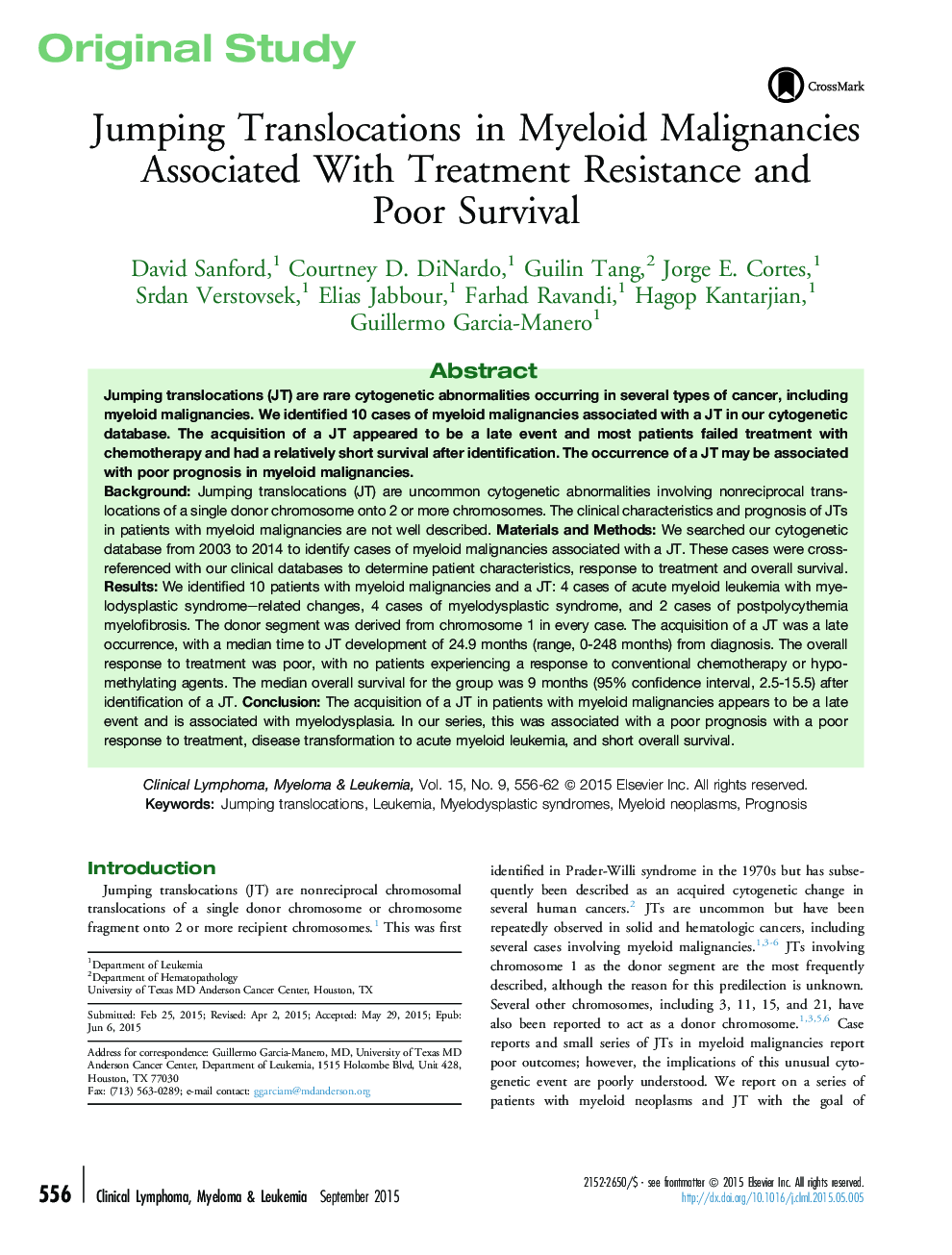| Article ID | Journal | Published Year | Pages | File Type |
|---|---|---|---|---|
| 2754331 | Clinical Lymphoma Myeloma and Leukemia | 2015 | 7 Pages |
BackgroundJumping translocations (JT) are uncommon cytogenetic abnormalities involving nonreciprocal translocations of a single donor chromosome onto 2 or more chromosomes. The clinical characteristics and prognosis of JTs in patients with myeloid malignancies are not well described.Materials and MethodsWe searched our cytogenetic database from 2003 to 2014 to identify cases of myeloid malignancies associated with a JT. These cases were cross-referenced with our clinical databases to determine patient characteristics, response to treatment and overall survival.ResultsWe identified 10 patients with myeloid malignancies and a JT: 4 cases of acute myeloid leukemia with myelodysplastic syndrome–related changes, 4 cases of myelodysplastic syndrome, and 2 cases of postpolycythemia myelofibrosis. The donor segment was derived from chromosome 1 in every case. The acquisition of a JT was a late occurrence, with a median time to JT development of 24.9 months (range, 0-248 months) from diagnosis. The overall response to treatment was poor, with no patients experiencing a response to conventional chemotherapy or hypomethylating agents. The median overall survival for the group was 9 months (95% confidence interval, 2.5-15.5) after identification of a JT.ConclusionThe acquisition of a JT in patients with myeloid malignancies appears to be a late event and is associated with myelodysplasia. In our series, this was associated with a poor prognosis with a poor response to treatment, disease transformation to acute myeloid leukemia, and short overall survival.
